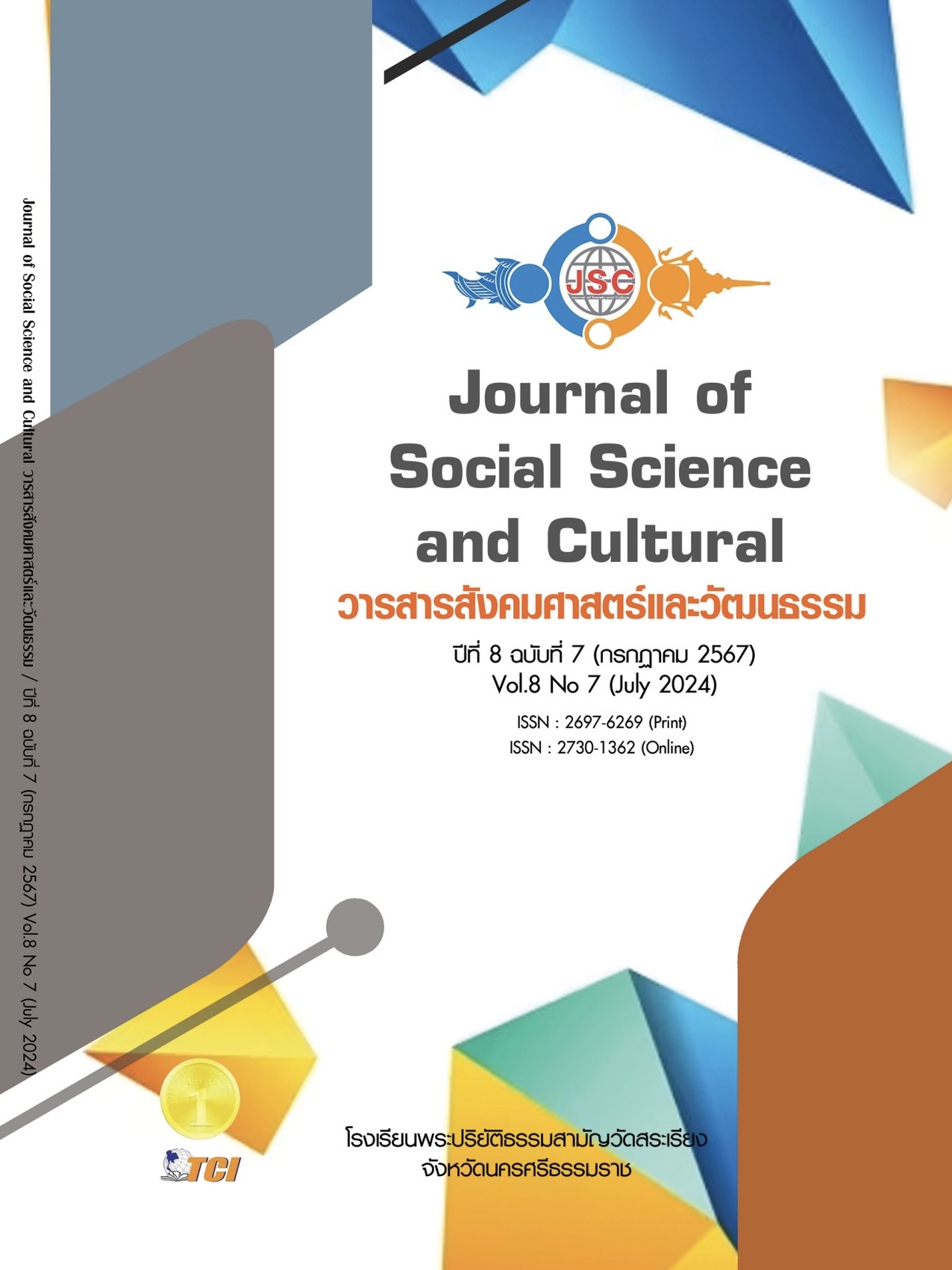THE CREATIVE CONCEPT SONG SET “NOP PHRA THAT WAI SA EIGHT REGIONS OF LANNA GREAT PU CHA KEETAKAL”
Main Article Content
Abstract
This research aims to study 1) The historical, legends, and construction styles context of the pagodas (Phra That) in the eight northern provinces of Thailand. 2) This research is also explores the context of traditional Lanna music in these provinces, using the findigs as inspiration and concepts for creating musical compositions. The study focuses on the following pagodas: Phra That Doi Tung in Chiang Rai, Phra That Hariphunchai in Lamphun, Phra That Lampang Luang in Lampang, Phra That Chae Haeng in Nan, Phra That Doi Suthep in Chiang Mai, and Phra That Doi Kong Mu in Mae Hong Son. This research is qualitative research. The sample population for the interviews is consisted of: The abbot of Wat Phra Tat or 8 abbot representatives, 1 national artist, 8 ethnic Lanna music experts and 2 academics. The research instruments were interview forms. The research findings indicate that according to the legend of Phra Chao Liap Lok, the Lord Buddha visited the Lanna region, where important relics were enshrined in each province. In Mae Hong Son, the relics of the Lord Buddha's disciples were enshrined. In terms of traditional music, the provinces of Chiang Rai, Chiang Mai, Lamphun, Lampang, and Phayao commonly perform with the Padd Kong ensemble. In Phrae and Nan, the Saw and Pin ensemble is popular, while in Mae Hong Son, the Toyo Horn and Long Drum ensembles are favored. The composition of the musical pieces is divided into three sections. The first section, which describes the arrival of the Buddha in the Lanna region, utilizes the Oong Kalong singing style. The second section, which represents the eight pagodas in the Lanna region, features unique musical ensembles from each province. The third section, which depicts the tradition of bathing the relics, employs lively and joyous melodies.
Article Details
References
นิคม ขันทะกิจ. (13 ตุลาคม 2566). บริบทดนตรีพื้นบ้านล้านนาในจังหวัดพะเยา. (อุณากรรณ รัศมี, ผู้สัมภาษณ์)
บัวซอน ถนอมบุญ. (25 เมษายน 2567). บริบทการขับซอและวงปี่จุม. (อุณากรรณ รัศมี, ผู้สัมภาษณ์)
ปทุมทิพย์ กาวิล. (2563). ป้าดก้องบทเพลงในพิธีกรรมและความเชื่อ. เชียงใหม่: สำนักพิมพ์ปีระกา.
ประเสริฐ ประดิษฐ์. (15 มกราคม 2567). บริบทดนตรีพื้นบ้านล้านนาในจังหวัดแม่ฮ่องสอน. (อุณากรรณ รัศมี,
ผู้สัมภาษณ์)
ระวี สิริอิสระนันท์. (2557). นิกายสงฆ์ในเชียงใหม่. เชียงใหม่: ดาราวรรณการพิมพ์.
รักเกียรติ ปัญญายศ. (28 กันยายน 2566). บริบทดนตรีพื้นบ้านล้านนาในจังหวัดเชียงใหม่. (อุณากรรณ รัศมี,
ผู้สัมภาษณ์)
สนั่น ธรรมธิ. (2550). หนังสือชุดล้านนาคดีนาฏดุริยการล้านนาสำนักส่งเสริมศิลปวัฒนธรรม. เชียงใหม่: สุเทพการพิมพ์.
สุคำ แก้วศรี. (12 ตุลาคม 2566). บริบทดนตรีพื้นบ้านล้านนาในจังหวัดเชียงราย. (อุณากรรณ รัศมี, ผู้สัมภาษณ์)
สุดแดน วิสุทธิลักษณ์. (2564). พุทธภูมิกายาและล้านนาประเทศอ่านตำนานพระเจ้าเลียบโลกผ่านระบบสารสนเทศภูมิศาสตร์. กรุงเทพมหานคร: อี ที พับลิชชิ่ง.
เสถียร จินดาวงศ์. (13 มกราคม 2567). บริบทดนตรีพื้นบ้านล้านนาในจังหวัดลำพูน. 13 . (อุณากรรณ รัศมี,
ผู้สัมภาษณ์)
อรุณ ทิพยวงศ์. (11 ตุลาคม 2566). บริบทดนตรีพื้นบ้านล้านนาในจังหวัดลำพูน. (อุณากรรณ รัศมี, ผู้สัมภาษณ์)
อำนวย มหามิตร. (14 มกราคม 2567). บริบทดนตรีพื้นบ้านล้านนาในจังหวัดลำปาง. (อุณากรรณ รัศมี,
ผู้สัมภาษณ์)
อินส่วย มูลทา. (10 ตุลาคม 2566). บริบทดนตรีพื้นบ้านล้านนาในจังหวัดน่าน. (อุณากรรณ รัศมี, ผู้สัมภาษณ์)


